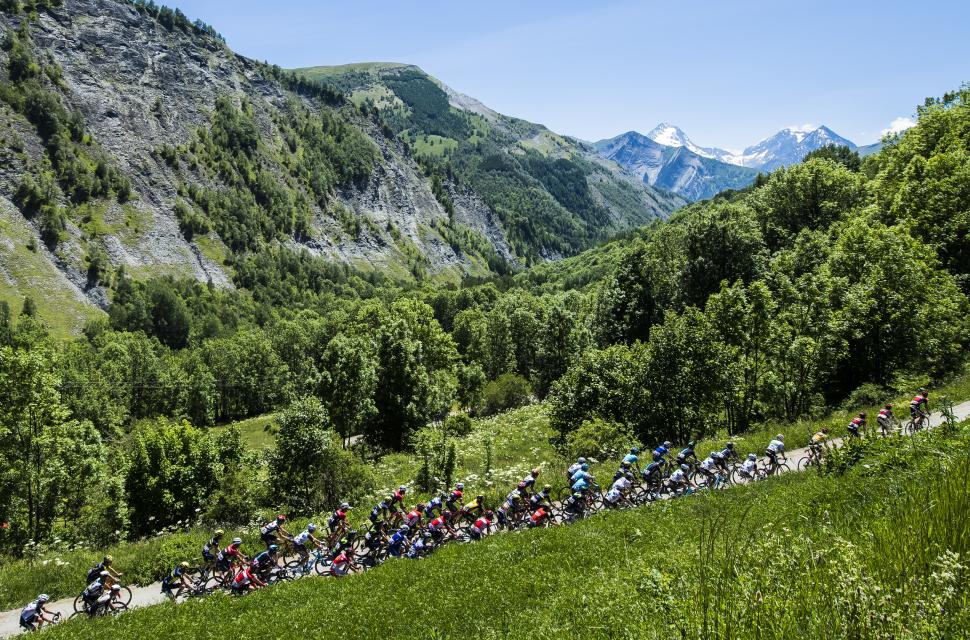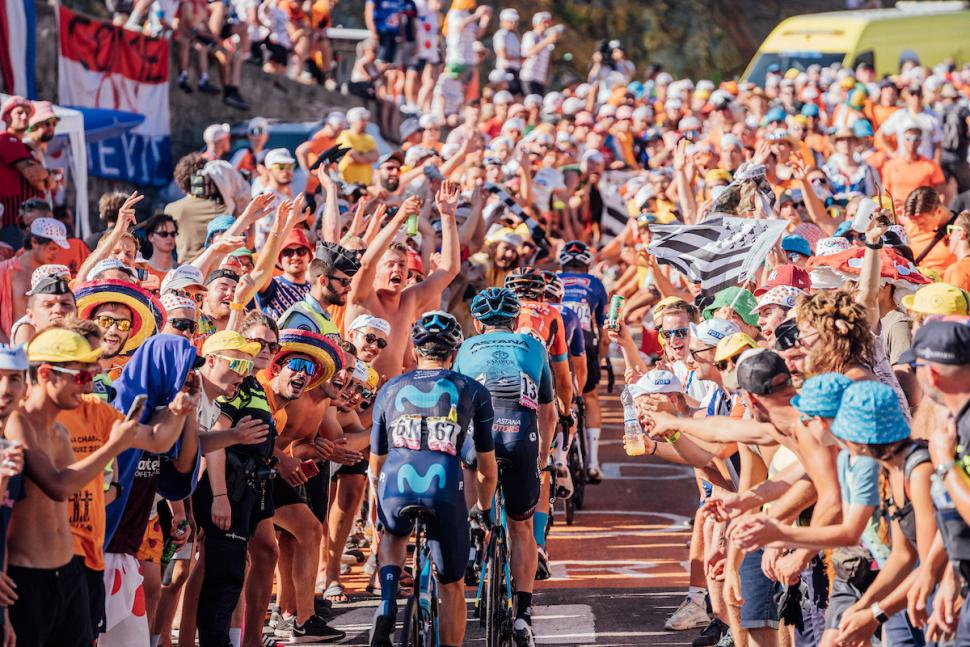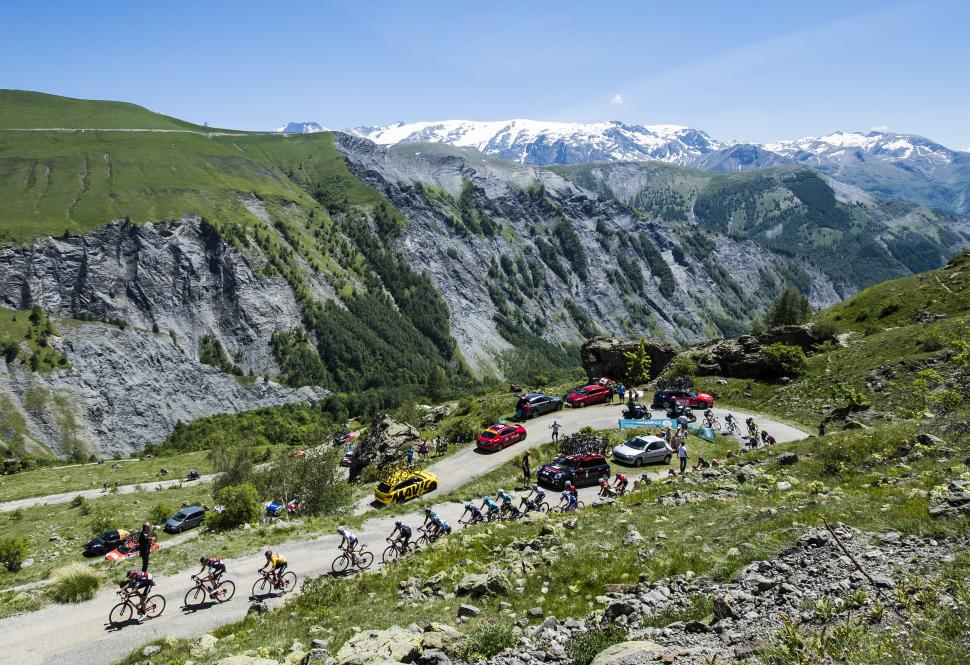The 2026 Tour de France Hommes may still be seven months away, but the race’s much-anticipated Alpe d’Huez double bill could already be in jeopardy, after local environmentalists launched a campaign urging race organisers ASO to scrap the planned ascent of the Col de Sarenne, the final major climb of next year’s Tour.
An online petition, launched last month, claims the Tour’s visit to the remote Alpine climb, along with the thousands of amateur cyclists who will ascend it as part of the Étape du Tour sportive, could have a devastating impact on the area’s “precious and vulnerable wildlife”.
The petition, which has already attracted around 6,000 signatures, follows a similar, successful campaign against the Vuelta a España’s inclusion of the Bola del Mundo climb in September, the race’s organisers ultimately bowing to the demands of activists by banning spectators from the mountain’s final, most ecologically fragile kilometre.
The Col de Sarenne, a 12.8-kilometre climb with an average gradient of 7.3 per cent, forms the final flourish to what Tour organisers ASO hope will prove an exciting crescendo to cycling’s biggest race next July, based almost entirely around Alpe d’Huez, arguably the sport’s most famous test.
Following a summit finish on the Alpe on the Friday, in its traditional 21-hairpin format, the Tour’s penultimate stage is the toughest of the entire race, featuring the fearsome Col de la Croix de Fer, the Télégraphe, the Galibier, and finally the Sarenne, before finishing back at the nearby ski resort of Alpe d’Huez.
The Sarenne, essentially the ‘back road’ to the much more famous Alpe, has featured once before at the Tour, back in 2013. Then it was primarily used as a descent off Alpe d’Huez, which featured twice on the same stage that year, the riders tackling the final few kilometres towards the Sarenne’s summit before heading back down to the foot of the climb.
 The peloton climbs the Col de Sarenne, 2017 Critérium du Dauphiné (credit: ASO/Alex Broadway)
The peloton climbs the Col de Sarenne, 2017 Critérium du Dauphiné (credit: ASO/Alex Broadway)
The peloton has raced up the entirety of the Sarenne previously, in essentially the same format as next July’s route, at the 2017 Dauphiné, when Team Sky’s Pete Kennaugh won on the Alpe and his fellow Brit Ben Swift finished second.
However, if a local environmentalist, the aptly named Matthieu Stelvio, gets his way, there will be no repeat of that 2017 Dauphiné – possibly forcing ASO into a drastic rethink of its grand crescendo-focused plans for next year’s Tour.
In his petition, Stelvio points out that the Sarenne, located in the Ferrand Valley, is home to marmots, foxes, chamois, short-toed eagles, and stoats, as well as the rare and “fragile” black grouse, whose chicks hatch in July, when the Tour will pass through the area.
“Reaching an altitude of 1,999 metres, the road leading to the Col de Sarenne is beautiful and wild,” Stelvio wrote. “Closed for eight months of the year, this road is a pastoral route, reserved for shepherds. The speed limit is 20kph… The Col de Sarenne is one of those beautiful and rare places where you can still breathe pure air.
“The organisers of the 2026 Tour de France want to transform the Col de Sarenne into the world’s largest stadium.”
> Will the Tour de France’s double Alpe d’Huez gamble pay off? 2026 routes analysed
According to the environmentalist, the influx of thousands of cycling fans onto the road’s “wilder” side could severely impact the local grouse, ptarmigan, and rock partridge, whose decline has been linked to over-visitation by humans and disturbance of nests.
“In terms of location and timing, it’s hard to find a worse place to attract crowds,” Stelvio argued, while also raising concerns about the television helicopters used to capture the race and which he says could disturb the area’s bearded vultures and cause breeding failure.
It’s not just the Tour’s penultimate day that has sparked Stelvio’s petition, however. The 2026 Étape du Tour, the race’s annual amateur sportive, will trace the same route as stage 20 six days before the pros.
“As in 2013, the influx of cyclists to Sarenne is likely to last for several weeks, further disturbing precious and vulnerable wildlife,” he said.
Stelvio also cited the potential impact on the area’s “rare and fragile flora” which he believes will be “trampled by the crowds, perhaps even crushed by hundreds of vehicles, hundreds of tents”, though it is not yet clear whether fans will in fact be permitted to stand on the roadside, with the Tour often imposing restrictions on spectators when the race visits environmentally sensitive climbs.
 Fans on Alpe d’Huez during the Tour de France (credit: Zac Williams/SWpix.com)
Fans on Alpe d’Huez during the Tour de France (credit: Zac Williams/SWpix.com)
“Is this really the place to organise an event that could gather as many spectators as 10 Stade de France stadiums?” the campaigner asked.
Stelvio’s petition, which as of Monday afternoon has attracted around 6,000 signatures, follows a similar campaign he launched back in 2013, when the Tour first visited the Sarenne. That petition was signed by over 12,000 people but, Stelvio says, did not result in any response from ASO.
“Nature is more important than this spectacle-business (which has often proven to be a sham). And the organisers of the Tour de France don’t care about nature,” he wrote.
“How can we believe that a company that manages events like the Dakar Rally and other rallies, in addition to the Tour de France, cares about wildlife? Does the fact that TotalEnergies is an official partner of the 2026 Tour de France prove otherwise?
“On the other hand, many financiers would like to expand the ski area from Alpe d’Huez, and are eyeing the Sarenne. In the long term, this passage of the Tour through a place that has been so well preserved until now is perhaps the second step towards massive overdevelopment.
“In 1952, when cyclist Fausto Coppi won at Alpe d’Huez, he did so amidst marmots and a few farmers, in a very small ski resort.
270 years later, Alpe d’Huez has extended its steel tentacles over one of the most beautiful mountain ranges in France and wants to expand even further, without regard for the tranquillity of Nature (going so far as to organise electronic music festivals in the heart of the mountains).
“What do we want to leave to future generations? A planet of steel and concrete? Isn’t it time to say stop to those who want to defile what we hold most dear? NATURE IS NOT A STADIUM.”

